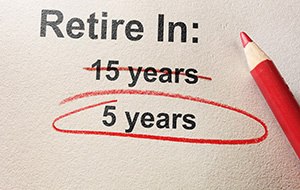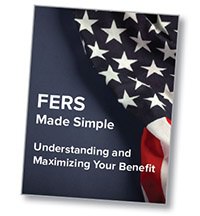Understanding the FERS Supplemental Annuity for Federal Workers Retiring Early
November 15th, 2018 | 2 min. read

From postal workers to VA doctors, we’ve had the pleasure of helping many federal government employees reach retirement. Though the average age federal employees voluntarily retire is 63, there are many who choose to leave the workplace earlier. Those who want to retire early need to know about the FERS Supplemental Annuity Benefit.
The Supplemental Annuity Benefit is payable to those who are able to retire on an immediate (i.e., full benefit) Federal Employees Retirement System (FERS) basic benefit that is not reduced for age.
Early Retirement for Federal Employees
Federal employees are eligible for early retirement if they have reached the FERS minimum retirement age and have 10 years of service. Generally, those that elect early retirement will have their FERS basic benefit permanently reduced by 5% for each year they retire before age 62.
Some workers, however, can retire before age 62 without reduced benefits under one of two conditions: They reach Minimum Retirement Age (MRA) (age 55-57, depending upon your year of birth) with 30 years of service; or, are age 60 with 20 years of creditable service.
Eligibility for the FERS Supplemental Annuity Benefit
You are eligible for the Supplemental Annuity Benefit if you retire voluntarily with a benefit that is not reduced for age. Those who retired involuntarily or voluntarily because of reorganization or reduction in force and have reached their MRA are also eligible.
How the FERS Supplemental Annuity Benefit Works
The Supplemental Annuity Benefit is payable until age 62, which is when you become eligible for Social Security. It ends at age 62, regardless of whether or not you decide to file for Social Security benefits then or delay them until a later time.
How Your FERS Supplemental Annuity Benefit Is Calculated
Think of this benefit as if you were age 62 and fully insured for Social Security retirement benefits. It’s calculated by estimating the Social Security retirement benefit over a 40-year career and then reducing this benefit proportionately by the number of years of FERS service.
For example, if you had 32 years of FERS service, this amount would be divided by 40 as follows:
32/40=.8 or 80%
Therefore, you would receive 80% of your projected Social Security retirement benefit at age 62.
What Else to Know
It’s important to note that the FERS Supplemental Annuity Benefit is subject to an earnings test. Earning income in the form of wages or compensation after retirement will reduce the supplement (benefits are reduced by one dollar for every two dollars earned above a certain amount, which changes yearly). Further, there is no cost-of-living adjustment to protect against inflation.
Though early retirement is generally defined as retiring only a few years before age 62, it requires you to plan very differently. For example, you don’t gain penalty-free access to your Thrift Savings Plan account until age 59 ½ and can’t file for Social Security until age 62. So, how do you generate enough income until then to cover your retirement expenses? Any federal employee interested in an early retirement should first work with a financial adviser to create a financial plan.
Learn more about government retirement benefits, including the FERS basic benefit, the Thrift Savings Plan and other retirement planning steps, by downloading our free, easy-to-understand guidebook, FERS Made Simple: Understanding and Maximizing Your Benefit. (click the button below)
Advance Capital Management is a fee-only RIA serving clients across the country. The Advance Capital Team includes financial advisers, investment managers, client service professionals and more -- all dedicated to helping people pursue their financial goals.



